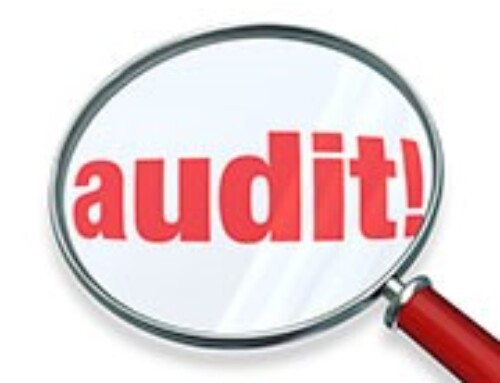Do you own a vacation home in the mountains or near the water where you can enjoy some much-needed rest and relaxation? If you rent it to tenants while you and your family aren’t using it, the home can be a valuable source of tax deductions, besides providing personal pleasure. In fact, you might even be able to claim a tax loss on the rental activity for the year.
Vacation homeowners need to carefully observe all the federal income tax rules for rentals. With some astute tax planning before the summer rental season begins, you can sidestep any potential tax pitfalls — and maximize the tax benefits.
The Basics
Many vacation homeowners rent out the property at least part of the year to defray some of the costs. Of course, rental income is generally taxable, but this tax liability can be offset by deductions for expenses attributable to the home, such as utilities, repairs, insurance, mortgage interest and property taxes. What’s more, you’re entitled to a generous depreciation allowance based on IRS tables.
These deductions can add up. If your write-offs exceed your rental income for the year, you’re entitled to claim a tax loss on your personal tax return.
However, if you’re not careful, you could fall into a tax trap for excessive personal use. Specifically, the annual deduction for rental expenses is limited to the amount of the rental income if your use of the vacation home — including use by other family members — exceeds the greater of:
- 14 days, or
- 10% of the time the home is rented out.
If your use exceeds these limits, you can’t claim a tax loss. And the rental income in excess of rental expenses remains taxable.
Tax Planning Tips
By planning ahead, you can avoid this pitfall. If you anticipate an overall loss in 2024, consider scheduling your vacation time to stay below the limit before you start renting to tenants. A few days here and there can make a big difference in your tax outcome.
For example, Mario and Maria own a cottage at the shore. They would like to rent it for twelve weeks (84 days) at an average of $2,500 per week. Therefore, they expect to receive a total of $30,000 in rental income in 2024 ($2,500 times 12 weeks). The estimated total expenses attributable to the rental are $35,000 for 2024. So, they expect to incur a loss of $5,000 this year.
Initially, the couple had planned to spend one week vacationing at the home, plus five weekends during the year, for an annual total of 17 personal-use days. However, because their personal use exceeds the 14-day/10% limit, they would be allowed to deduct only $30,000 in rental expenses.
After consulting with their tax advisor, Mario and Maria modified their vacation plans to stay below the personal-use limit. As a result, they’ll be able to claim the rest of their tax deductions on the property.
Important: Note that the entire day is treated as a personal-use day for tax purposes no matter how many hours you stay there. So, popping over while you’re passing nearby could end up costing you.
When the situation warrants it, you may be able to convert personal-use days into nonpersonal days. For instance, a day spent making repairs or cleaning for rental use doesn’t count as personal use if the maintenance work is your main reason for stopping in. It doesn’t matter if the rest of the family comes along for their own recreation. In the hypothetical example, Mario and Maria could take advantage of this special rule by spending just three days of their vacation time doing repairs and maintenance.
Finally, remember that attribution for personal use extends beyond your immediate family. For example, if your cousin or close friend spends time at your vacation home, that time counts toward the personal-use limit, unless you charge them a reasonable rental fee.
Unfavorable PAL Rules
Vacation homeowners also should be aware of the passive activity loss (PAL) rules that limit deductions from so-called “passive” activities to the amount of income from passive activities during the year. Rental real estate is automatically treated as a passive activity.
Fortunately, you may reduce the tax impact of the PAL rules if you qualify as an “active” participant in the rental real estate activity. In that case, you can use up to $25,000 of loss to offset non-passive income, such as wages and self-employment income. However, the $25,000 offset is phased out for an adjusted gross income (AGI) between $100,000 and $150,000.
The active participation requirement is satisfied by “regular, continuous and substantial involvement” in the activity, such as participating in management decisions, approving new tenants, making repairs and deciding on rental terms.
Exploring Your Options
While you probably didn’t buy your vacation home solely for the federal income tax benefits, there’s no sense in passing up tax-saving opportunities. Contact your tax advisor to discuss the tax implications of your vacation home usage this year.
| Tax-Free Vacation Home Rentals
A special federal income tax break is available if you rent out your vacation home for less than 15 days during the year and use it for personal purposes for more than 14 days. This scenario often happens with vacation homes located near major events, such as concerts and professional golf tournaments. Here, you don’t need to report any rental income. The rental activity is completely disregarded for federal income tax purposes. You can report any allowable itemized deductions for mortgage interest and property taxes on your personal tax return. The only drawback is that you can’t deduct any expenses attributable to the rental activity, such as advertising, repairs, cleaning costs, insurance or depreciation. |






